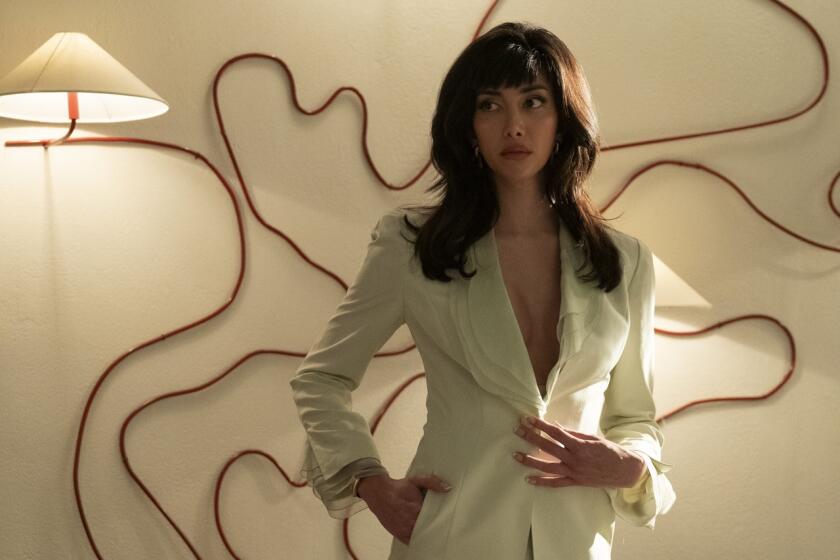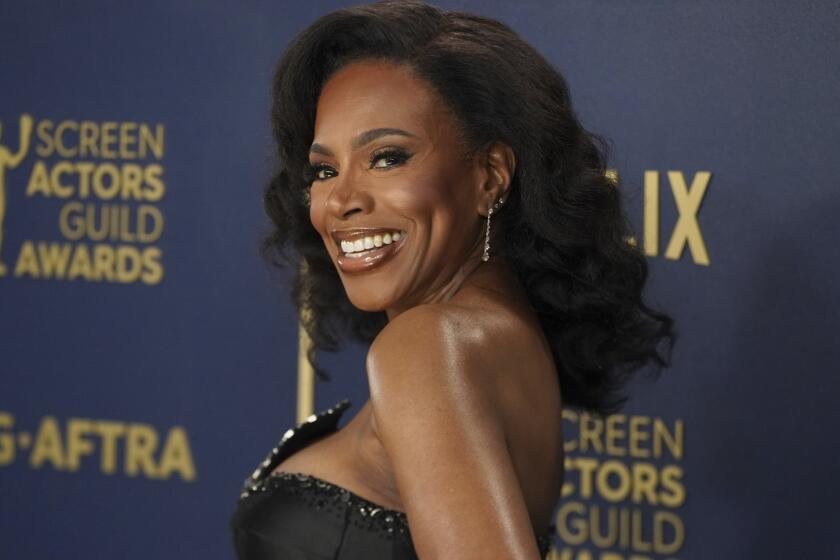Reaching the End of Its ‘Limits’
From its first alien encounter in the ‘60s, “The Outer Limits” has always been a science-fiction series designed for the thinking person. Initially joining ABC’s lineup in 1963, the hourlong show explored themes ranging from the horrors of an atomic age to the panic of the Cold War.
Showtime continued that cerebral tradition when it introduced an updated version of “The Outer Limits” six seasons ago.
So it is fitting that the anthology series concludes its run on the pay cable channel Sunday with a 90-minute finale in which the fate of the world is decided by the Supreme Court, with Charlton Heston portraying the chief justice.
“The Final Appeal,” written by Sam Egan and directed by Jimmy Kaufman, is set during the year 2076 when society has a stringent ban on technology. Dr. Theresa Givens (Amanda Plummer) has been sentenced to death for violating the ban with her time-travel machine. However, the Supreme Court has decided to hear Dr. Givens’ final appeal.
Besides Heston and Plummer, the all-star cast features Robert Loggia, Cicely Tyson, Swoosie Kurtz and Hal Holbrook as members of the Supreme Court. Kelly McGillis plays Dr. Givens’ attorney and Michael Moriarty, the pompous prosecutor. Wallace Langham, best known for his comedic roles in “The Larry Sanders Show” and “Veronica’s Closest,” steals the movie as a frightening, unexpected witness.
Plummer is actually reprising her Emmy Award-winning role of Dr. Givens, which she originated in the episode “A Stitch in Time.” The Dr. Givens of the finale, though, is vastly different.
“They are the same person but in a different dimension and different circumstance,” Plummer says. “Circumstances do make a difference.”
Kaufman, who has directed several of the 132 episodes Showtime has aired, counts the series among his favorites. “I always found ‘The Outer Limits’ a very smart socially and morally relevant show,” Kaufman says. “I have done other sci-fi projects, and this one I truly love because it was meaningful.”
The challenge for the producers was how to end a series that has no recurring characters or story lines. “What we ended up doing was distilling the underlying themes of the series and finding an appropriate way to conclude--in some way--the debate we have been having for six years,” says executive producer Mark Stern.
That debate, he continues, “was very much the relationship between man and technology, and how it is very much a love-hate one. There are elements of our society and our technology that really scare the hell out of us, yet we are also charging at a head-full pace into the unknown.”
The message implanted in “Final Appeal,” director Kaufman says, is “we won’t get away with it. . . . From our point of view, [viewers should] feel the need to look at [technology] very carefully.”
Kurtz says the cast talked about those themes during the table reading of the script. “This is a huge issue,” she says. “The fate of the world is basically decided by whatever decision [the court] hands down.”
Sci-Fi Channel Recycles Episodes
Since 1995, “The Outer Limits” has had a second life with the episodes going into syndication six months after the first run on Showtime, with the sixth season beginning its syndicated run this fall. Additionally, the series also airs on the Sci-Fi Channel.
“We are big fans of the show. It has done extremely well for us. But we felt it was time to move on and do other shows,” says Pancho Mansfield, Showtime’s senior vice president of original programming.
There have been some preliminary discussions with the Sci-Fi Channel about resurrecting the series for a seventh season, according to Hank Cohen, president of MGM Television Entertainment, which owns rights to the series. Though nothing has been decided, Cohen says, “it’s time to rest it for a while.”
Stern, though, believes there is still a lot of life left in the anthology. “There was a certain bittersweet quality to finishing all of these episodes,” says Stern of Trilogy Entertainment Group, the company that produces the series in association with Alliance Atlantis.
“We don’t want this to end,” Kaufman adds. “It’s always new. There are no cast problems because there are no recurring characters.”
When “Outer Limits” was resurrected by MGM, Showtime and Trilogy, Stern says “there were a number of things we wanted to accomplish” with the series.
As Scary as the Original Series
“It definitely needed to be as visceral and scary as the original. It needed to be as topical to our time as the original was for its time. We needed to find those themes and social commentaries that were going to grab an audience and make them think like the original series did.”
In one episode, for example, people with failing bodies can have their heads transplanted on to a healthy body. Another installment found a computer malfunctioning to force human beings to emerge from their isolation and band together.
Just as the first “Outer Limits,” the updated series attracted such popular stars as Beau and Lloyd Bridges, David Hyde Pierce, Heather Graham, Ryan Phillipe and Marlee Matlin. “Star Trek’s” Leonard Nimoy, who appeared in the original ‘60s version, dropped into the Showtime series as well.
The show also changed the landscape of Showtime. Though the network had aired such comedy series as “It’s Garry Shandling’s Show” and “Brothers” in the 1980s, the anthology began the cable network’s “renovated Showtime series life,” Mansfield says. Showtime followed with series such as “Poltergeist: The Legacy” and “Stargate SG-1,” which is now in its fourth season.
Mansfield believes the series’ appeal lies in the fact that one extraordinary thing happens in each episode. “When you are consistent about that and are realistic about that and set up a premise that is fascinating to an audience, you can take them anywhere,” he says.
One of the biggest surprises for MGM and Showtime was its fans among women in a genre that traditionally attracts more male viewers. “I think the reason is that we told a lot of dramatic stories that were as complex in their emotion as they were techie,” Stern says.
Kurtz is one such fan. The actress admits she’s been dying to do sci-fi for years. “When I first heard ‘Outer Limits’ I thought I’d be playing an alien with five ears, and here I am playing this very sober real, real person. I never played a Supreme Court justice. I was quite intrigued by it.”
* “The Outer Limits: The Final Appeal” airs Sunday at 8 p.m. on Showtime. The network has rated it TV-14 (may be unsuitable for children younger than 14). The finale will be preceded by an eight-episode “Outer Limits” marathon that begins at 2 p.m.
The complete guide to home viewing
Get Screen Gab for everything about the TV shows and streaming movies everyone’s talking about.
You may occasionally receive promotional content from the Los Angeles Times.




